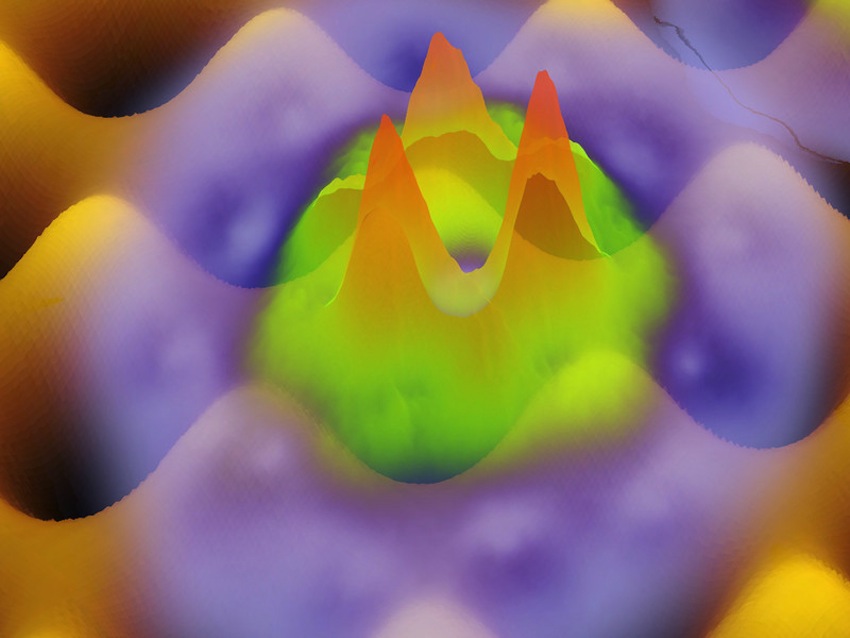A new kind of quantum dot...

Scientists combine graphene and hexagonal boron nitride to make strongly tunable quantum systems
An international research team of TU Wien, RWTH Aachen and the University of Manchester have succeeded in developing a new type of quantum dot which allow for much more accurately and widely tunable energy levels of confined electrons than before.
This progress was made possible by combining graphene and 2D hexagonal boron nitride (BN).
The theoretical simulations for the new technology were performed in the team of Florian Libisch and Joachim Burgdörfer at TU Wien. The experiment involved the group of Markus Morgenstern at RWTH Aachen and the team around Nobel-prize laureates Andre Geim and Kostya Novoselov from Manchester who prepared the samples. The results have now been published in Nature Nanotechnology.
Tuning electron energies
"For many applications in the field of quantum technologies one requires a quantum system were electrons occupy two states "“ similar to a classical switch "“ on or off, with the difference that quantum physics also allows for arbitrary superpositions of the on and off states" explains Florian Libisch from the Institute for Theoretical Physics at TU Wien.
A key property of such systems is the energy difference between those two quantum states: "Efficiently manipulating the information stored in the quantum state of the electrons requires perfect control of the system parameters. An ideal system allows for continuous tuning the energy difference from zero to a large value" says Libisch.
Like graphene, BN forms a honeycomb lattice. "The honeycombs in graphene and hexagonal BN are, however, not exactly of equal size," explains Florian Libisch. "If you carefully put a single layer of graphene on top of hexagonal BN, the layers cannot perfectly match. This slight mismatch creates a superstructure over distances of several nanometers, which results in an extremely regular wave-like spatial oscillation of the graphene layer out of the perfect plane."
As the simulations at TU Wien show, exactly these oscillations in graphene on hexagonal BN form the ideal scaffold to control electron energies.
The potential landscape created by the regular superstructure allows for accurately placing the quantum dot, or even moving it continuously and thus smoothly changing its properties.
Depending on the exact position of the tip of the scanning tunneling microscope, the energy levels of the electronic states inside the quantum dot change. "A shift by a few nanometers allows for changing the energy difference of two neighboring energy levels from minus five to plus ten millielectronvolts with high accuracy "“ a tuning range about fifty times larger than previously possible", explains Florian Libisch.
As a next step, the tip of the scanning tunneling microscope could be replaced by a series of nanoelectronic gates. This would allow for exploiting the quantum dot states of graphene on hexagonal BN for scalable quantum technologies such as valleytronics.
"This emerging new field is quickly becoming a center of attention", comments Florian Libisch. "There are multiple potential technological applications of these atomically thin materials "“ that is also why the TU Wien has also very recently established a special doctoral college focused on two-dimensional materials."
'Large tunable valley splitting in edge-free graphene quantum dots on boron nitride' by Freitag et al; Nature Nanotechnology, 2018. DOI: 10.1038/s41565-018-0080-8


































